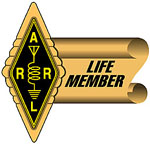×
Adjective Fire Danger
The Adjective Class Fire Danger Rating should only be utilized for public information. Staffing Level (SL or STL) is used for in-house fire readiness.
Using the IC, the SL (STL), and the Adjective Fire-Danger Matrix, WIMS determines the Fire Danger Rating (R). Adjective Fire-Danger is expressed as one of five levels:
- Low (L) or Green
- Moderate (M) or Blue
- High (H) or Yellow
- Very High (VH or V) or Orange
- Extreme (E) or Red
The processors that calculate fire danger automatically calculate the adjective class rating
using information provided by the user when establishing their weather station
parameters. The adjective rating calculations are keyed off the priority one fuel model
listed in your station record. It uses the staffing index, such as ERC or BI, the user
associates with that first fuel mode/slope/grass type/climate class combination entered.
The actual determination of the daily adjective rating is based on the current or predicted value for a user selected staffing index and ignition component using the table below.
| Staffing Levels (SL or STL) |
Adjective Fire Danger Rating (R) |
| 1-,1,1+ |
L |
L |
L |
M |
M |
| 2-,2,2+ |
L |
M |
M |
M |
H |
| 3-,3,3+ |
M |
M |
H |
H |
VH |
| 4-,4,4+ |
M |
H |
VH |
VH |
E |
| 5-,5,5+ |
H |
VH |
VH |
E |
E |
| Ignition Component |
0-20 |
21-45 |
46-65 |
66-80 |
81-100 |



 Mt Washington Wx CAM
Mt Washington Wx CAM






